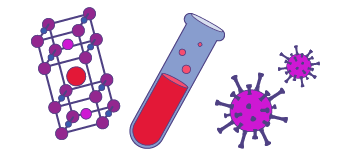EPR and ESR are two names of the same technique (EPR is preferred by the chemists and biologists while ESR is a favorite of physicists) which depends on detecting transitions between the magnetic field-split spin sublevels in systems with unpaired electrons, in particular, in paramagnets.
It has proven an indispensable tool in a large range of applications in physics, materials science, chemistry and biology, including studies of impurity states, molecular clusters, natural or induced radicals, optically excited paramagnetic states, electron spin-based quantum information devices, transition-metal based catalysts; and for structural and dynamical studies of metalloproteins, spin-labeled proteins and other complex bio-molecules and their synthetic models.
EPR/ESR when performed at high frequencies (hundreds of GHz rather than conventional 9 or 35 GHz) and high fields (up to 45 T instead of 0.3 – 1.2 T), correspondingly named HFEPR/HFESR, offers distinct advantages over traditional measurements. HFEPR/HFESR experiments can be crudely categorized as high resolution or broadband. In the former case, one concentrates on the g ~ 2 spectral region and studies it in great detail, often using pulsed techniques. This technique is appropriate mainly to radicals and defects. Broadband HFEPR/HFESR experiments cover a full frequency/field space and are particularly suitable to studying paramagnetic metal complexes and their clusters.

Explore our magnet schedule to see what exciting research is happening on our stellar fleet of instruments right now.
Telser, J., et al, High-frequency and -field electron paramagnetic resonance (HFEPR) – a new spectroscopic tool for bioinorganic chemistry, J. Biol. Inorg. Chem. (2014) Read online.
Telser, J., et al, High-frequency and -field electron paramagnetic resonance of transition metal ion (d block) coordination complexes, Specialist Periodical Reviews of the Royal Chemical Society: Electron Paramagnetic Resonance, 23 (2013).
Hill, S., et al, Magnetic quantum tunneling: insights from simple molecule-based magnets, Dalton Trans., 39 (2010) Read online.
Krzystek, J., et al, Multi-frequency, high-field EPR as a powerful tool to accurately determine zero-field splitting in high-spin transition metal coordination complexes, J. Coord. Chem. Rev., 250 (2006) Read online.
Brunel, L. C., et al, Modern developments and prospects in multi frequency high field EMR, Biological Magnetic Resonance 22 (2004).
Edwards, R. S., et al, High field high frequency EPR techniques and their application to single molecule magnets, Physica B, 346-347 (2004) Read online.
Last modified on 22 August 2023